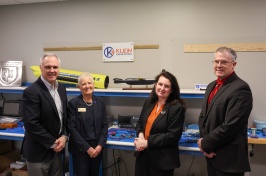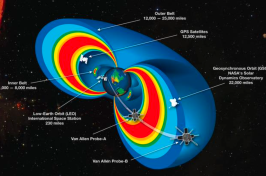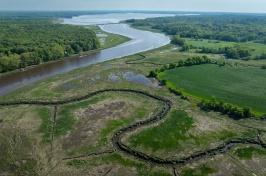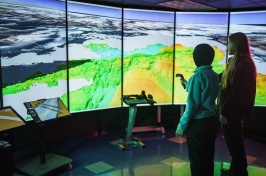UNH Research Finds Future Snowmelt Could Have Costly Consequences on Infrastructure

DURHAM, N.H.— Climate change and warmer conditions have altered snow-driven extremes and previous studies predict less and slower snowmelt in the northern United States and Canada. However, mixed-phase precipitation—shifting between snow and rain—is increasing, especially in higher elevations, making it more challenging to predict future snowmelt, a dominant driver of severe flooding. Researchers at the University of New Hampshire took a closer look at previous studies, and because geographical areas respond differently to climate change, they found future snowmelt incidences could vary greatly by the late 21st century. Snowmelt could decrease over the continental U.S. and southern Canada but increase in Alaska and northern Canada resulting in larger flooding vulnerabilities and possibly causing major societal and economic consequences including costly infrastructure failures.
“Estimation of future floods can be a tricky business and yet it is important information for those planning future infrastructure,” said Jennifer Jacobs, professor of civil and environmental engineering. “For instance, if a region primarily has floods occurring during the winter, then this work could really help build infrastructure that can handle those future conditions. And, if the floods are decreasing, then the design values should also decrease rather than over design.”
Their study, recently published in the journal Geophysical Research Letters, looked at previous study predictions of change in snowpack, snowmelt and runoff with the goal of translating it into information that would be helpful for water resources managers, engineering designers and the general public living in the areas of Northern California, Pacific Northwest, Alaska and Canada. The researchers used historical maps and regional climate model (RCM) simulations that focused on North America. They found that in the West Coast mountain areas, such as Northern California and the Pacific Northwest, there could be greater risk of rain-on-snow flooding because these areas are predicted to warm and produce more rain. This could increase the melting of any existing snowpack and lead to larger runoff potential, increasing flooding risk. But this differed in extreme cold regions like Alaska and northern Canada. Researchers found warmer temperatures in these areas could increase the opportunity for moisture that could likely lead to more winter precipitation like snow.
“These findings can be important in helping to develop or modify federal and state governments’ long-term policies for climate adaptation,” said Eunsang Cho, a former UNH doctoral student, now postdoctoral researcher at NASA’s Goddard Space Flight Center, and lead author of the study. “For example, the current U.S. government standards for water-related infrastructure design are based on liquid precipitation data with very limited guidance on snow or snowmelt information.”
The researchers point out that certain infrastructure policies, like the relicensing of dams, depend on information about extreme weather conditions. This information can help engineers design infrastructure not based on past conditions but to anticipate future conditions. In their previous research, Jacobs and Cho created a map that accounts for snowmelt across the continental U.S. They say this information is already being used by the state of California in their relicensing process.
This research was funded by NASA’s Applied Sciences Water Resources Program and the U.S. Department of Energy’s Office of Biological and Environmental Research program.
The University of New Hampshire inspires innovation and transforms lives in our state, nation and world. More than 16,000 students from all 50 states and 71 countries engage with an award-winning faculty in top-ranked programs in business, engineering, law, health and human services, liberal arts and the sciences across more than 200 programs of study. A Carnegie Classification R1 institution, UNH partners with NASA, NOAA, NSF and NIH, and received $260 million in competitive external funding in FY21 to further explore and define the frontiers of land, sea and space.
Latest News
-
Research Finds Rural Americans Carry Heavy Burden Accessing Social Security Benefits and InformationMarch 27, 2025
-
March 25, 2025
-
March 17, 2025
-
March 12, 2025
-
February 19, 2025














































